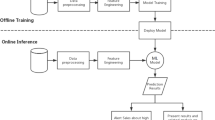Abstract
Customer Relationship Management systems are used to enable organizations to acquire new customers, develop a continuous relationship with them, and increase customer retention for more profitability. Customer Loyalty is also known as Customer Churn. The main intention of churn prediction is to classify and find customers into churner and non-churner. A churned customer means there is more chance that the customer is about to leave the organization. So in order to find the churn customers will give more benefits to the organization. Thus, churn prediction can avoid the loss of revenue by retaining the existing customers. There are several techniques are available with ensemble and hybrid models. This paper aims to predict customer loyalty in banking sector with a novel method named mixed ensemble model and hybrid model. Ensemble acts as a wrapper for group of machine learning or deep learning methods. This paper proposes two methods to predict customer churn using ensemble method with a mixed group containing XGB Classifier, LightGBM Classifier, and MLP model. And also build a hybrid model with the combination of Multilayer Perceptron (MLP) model and Convolutional Neural Network (CNN) model. Toward this, churn data of banking sector is used and build the systems then compare the performance of two. Thus, the system with more accuracy is termed more useful for organizations to find the customers with more chances to become churn. The results of experiments showed that the two proposed systems for churn prediction perform with an accuracy of 86% to 87%.
Access this chapter
Tax calculation will be finalised at checkout
Purchases are for personal use only
Similar content being viewed by others
References
Sabbeh, S.F.: Machine-learning techniques for customer retention: a comparative study. Int. J. Adv. Comput. Sci. Appl. 9(2) (2018)
Khan, A.A., Jamwal, S., Sepehri, M.M.: Applying data mining to customer churn prediction in an Internet Service Provider. Int. J. Comput. Appl. 9(7) (2010)
Dalvi, P.K., Khandge, S.K., Deomore, A., Bankar, A., Kanade, V.A.: Analysis of customer churn prediction in telecom industry using decision trees and logistic regression. In: 2016 Symposium on Colossal Data Analysis and Networking (CDAN), Indore, pp. 1–4 (2016)
Wu, L., Li, M.: Applying the CG-logistic regression method to predict the customer churn problem. In: 2018 5th International Conference on Industrial Economics System and Industrial Security Engineering (IEIS), Toronto, ON, pp. 1–5 (2018)
Bharadwaj, S., Anil, B.S., Pahargarh, A., Pahargarh, A., Gowra, P.S., Kumar, S.: Customer Churn prediction in mobile networks using logistic regression and multilayer perceptron (MLP). In: 2018 Second International Conference on Green Computing and Internet of Things (ICGCIoT), Bangalore, India, pp. 436–438 (2018)
Islam, M., Habib, M.: Data mining approach to predict prospective business sectors for lending in retail banking using decision tree. arXiv preprint arXiv.1504.02018 (2015)
Kumar, G.R., Tirupathaiah, K., Krishna Reddy, B.: Client Churn prediction of banking and fund industry utilizing machine learning techniques. IJCSE 7(6), 842–846 (2019)
Kumar, A.S., Chandrakala, D.: An optimal churn prediction model using support vector machine with Adaboost. Int. J. Sci. Res. Comput. Sci. Eng. Inf. Technol. 2(1), 225–230 (2017)
Mahajan, D., Gangwar, R.: Improved customer Churn behaviour by using SVM. Int. J. Eng. Technol. 2395–0072 (2017)
Kumar, S., Viswanandhne, S., Balakrishnan, S.: Optimal customer Churn prediction system using boosted support vector machine. Int. J. Pure Appl. Math. 119(12), 1217–1231 (2018)
ApurvaSree, G., Ashika, S., Karthi, S., Sathesh, V., Shankar, M., Pamina, J.: Churn prediction in Telecom using classification algorithms. Int. J. Sci. Res. Eng. Dev. 5, 19–28 (2019)
Prajapati, D., Dubey, R.K.: Analysis of customer Churn prediction in telecom sector using random forest.
Jaisakthi, S.M., Gayathri, N., Uma, K., Vijayarajan, V.: Customer Churn prediction using stochastic gradient boosting technique. J. Comput. Theor. Nanosci. 15(6–7), 2410–2414 (2018)
Mishra, A., Reddy, U.S.: A comparative study of customer churn prediction in telecom industry using ensemble based classifiers. In: 2017 International Conference on Inventive Computing and Informatics (ICICI), Coimbatore, pp. 721–725 (2017)
Idris, A., Khan, A.: Prediction system for telecom using filter wrapper and ensemble classification. Comput. J. 60(3), 410430 (2017)
Vijaya, J., Sivasankar, E.: Computing efficient features using rough set theory combined with ensemble classification techniques to improve the customer churn prediction in telecommunication sector. Computing 100(8), 839–860 (2018)
Wang, X., Nguyen, K., Nguyen, B.P.: Churn prediction using ensemble learning. In: Proceedings of the 4th International Conference on Machine Learning and Soft Computing (2020)
Amuda, K.A., Adeyemo, A.B.: Customers Churn prediction in financial institution using artificial neural network. arXiv preprint arXiv: 1912.11346 (2019)
Khan, Y., et al.: Customers Churn prediction using artificial neural networks (ANN) in Telecom Industry. Editorial Preface from the Desk of Managing Editor 10.9 (2019)
Basiri, J., et al.: A hybrid approach to predict churn. In: 2010 IEEE Asia-Pacific Services Computing Conference. IEEE (2010)
Hemalatha, P., Amalanathan, G.M. (2019). A hybrid classification approach for customer churn prediction using supervised learning methods: banking sector. In: 2019 International Conference on Vision Towards Emerging Trends in Communication and Networking (ViTECoN) (pp. 1–6). IEEE, Mar 2019
Tsai, C.-F., Lu, Y.-H. (2009). Customer churn prediction by hybrid neural networks. Exp. Syst. Appl. 36(10), 12547–12553 (2009)
Jamalian, E., Foukerdi, R.: A hybrid data mining method for customer churn prediction. Eng. Technol. Appl. Sci. Res. 8(3), 2991–2997 (2018)
Acknowledgements
I would like to acknowledge the contribution and support from the Computer Science and Engineering Department of Rajiv Gandhi Institute of Technology, Kottayam.
Author information
Authors and Affiliations
Corresponding author
Editor information
Editors and Affiliations
Rights and permissions
Copyright information
© 2021 The Author(s), under exclusive license to Springer Nature Singapore Pte Ltd.
About this paper
Cite this paper
Latheef, J., Vineetha, S. (2021). Predicting Customer Loyalty in Banking Sector with Mixed Ensemble Model and Hybrid Model. In: Satapathy, S.C., Bhateja, V., Favorskaya, M.N., Adilakshmi, T. (eds) Smart Computing Techniques and Applications. Smart Innovation, Systems and Technologies, vol 224. Springer, Singapore. https://doi.org/10.1007/978-981-16-1502-3_37
Download citation
DOI: https://doi.org/10.1007/978-981-16-1502-3_37
Published:
Publisher Name: Springer, Singapore
Print ISBN: 978-981-16-1501-6
Online ISBN: 978-981-16-1502-3
eBook Packages: Intelligent Technologies and RoboticsIntelligent Technologies and Robotics (R0)




